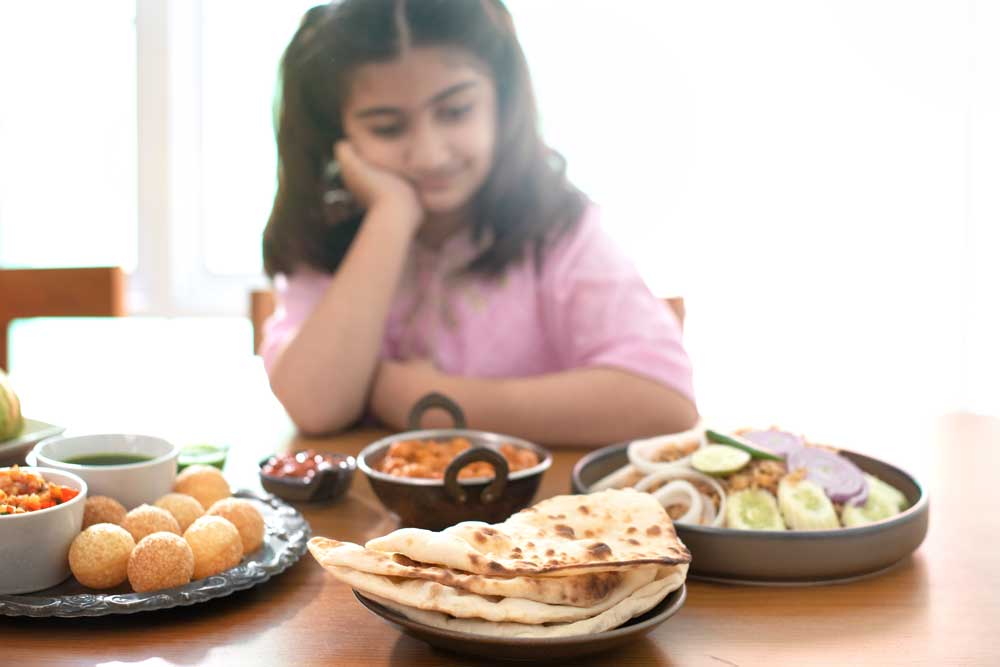For decades, ‘clean your plate’ has been ingrained in mealtimes in India, often touted as a mark of gratitude, frugality, and discipline. But is this rule still appropriate in today’s context of abundance and rising childhood obesity? Modern nutrition, science, and psychology warn that enforcing plate-cleaning may backfire. It may instead damage children’s ability to self-regulate, fostering unhealthy eating habits or even causing toxic relationships with food.
‘Intuitive eating begins early and children are born with these instincts,’ says nutritionist and dietician Pakhi Sharma-Krishnan. ‘They eat when hungry and stop when satisfied. This natural regulation is disrupted by forced eating, because pressure distracts children from hunger and fullness signals.’
Why Should Children Decide?
When allowed to choose their portions, children tend to serve and eat amounts more in line with nutritional recommendations, rather than oversized adult portions. One study found that children’s self-selected portions corresponded more closely to recommended serving sizes than those offered by parents, suggesting autonomy supports appropriate intake.
In some cases, pressure has also been linked to increased intake of unhealthy foods, especially when children are denied alternatives until they finish their plate. Authorities like the British Nutrition Foundation warn that urging children to finish their meals may contribute to childhood obesity, and recommend portion awareness over plate-cleaning.
Pakhi advocates for children to determine their own fullness cues. ‘Of course, parents are responsible for nutrition and inculcating healthy eating habits. But forcing your child to eat more of something is not a healthy practice at all. Let them lead with portion size. Otherwise, children could be prone to anxiety around eating, and even eating disorders later in life. They may look at food as a chore rather than nourishment.’
According to a paper by Brian Wansink of Cornell University, adults ate around 92 per cent of what was on their plate, while children (mostly elementary school aged) only ate an average of 59 per cent of what they served themselves. The paper explained that it was possible that these 326 children were ‘(1) not being aware of how hungry they are, 2) not being well-calibrated to know how much food would fill them up, (3) not knowing how much they will like a particularly new food, or (4) not ignoring their internal cues of satiety. This can also vary depending on whether the children are eating their food with utensils or with their hands, whether they are with friends, and whether they are extroverted or introverted.’
Essentially, a child who roughly eats around two-thirds of his or her self-served meal isn’t being wasteful and it is a perfectly normal phenomenon.

How Can You Implement Healthy Eating Habits Within This Framework?
The Division of Responsibility (DOR) is a model pioneered by therapist and author Ellyn Satter. According to the Ellyn Satter Institute, ‘The division of responsibility in feeding encourages you to take leadership with the what, when, and where of feeding and let your child determine how much and whether to eat of what you provide. When you do your jobs with feeding, your child will do his with eating.’ This approach fosters autonomy and positive mealtime dynamics.
In some cases, structure and planning are needed to encourage healthy eating habits. For instance, keeping processed sugary snacks out of sight may help increase fruit consumption instead. Children emulate what they see. When parents eat vegetables and balanced meals, children are more likely to follow suit. Similarly, making healthy foods accessible increases their selection, even without pressure.
‘If you want to introduce a new food, don’t give children a whole bowl and expect them to finish it.’ Let them know that they can try a small amount without pressure, and the ability to say no to the rest of it. This helps in building acceptance of new foods. It may take as many as 10–12 exposures for a child to show interest in a previously rejected food.’
Avoid overloading your child’s plate. Let them ask for seconds if required. Encourage them to eat well (after all, they need the energy), but don’t coerce them. Avoid food as a reward or punishment. Don’t tie meals to treats or consequences. Be patient and consistent because long-term habits form over time through gentle reinforcement. Finally, create relaxed mealtimes. Focus on connection and conscious eating without the distraction of television or tablets. Let’s empower children to listen to their bodies, savour their meals, and grow into intuitive eaters.